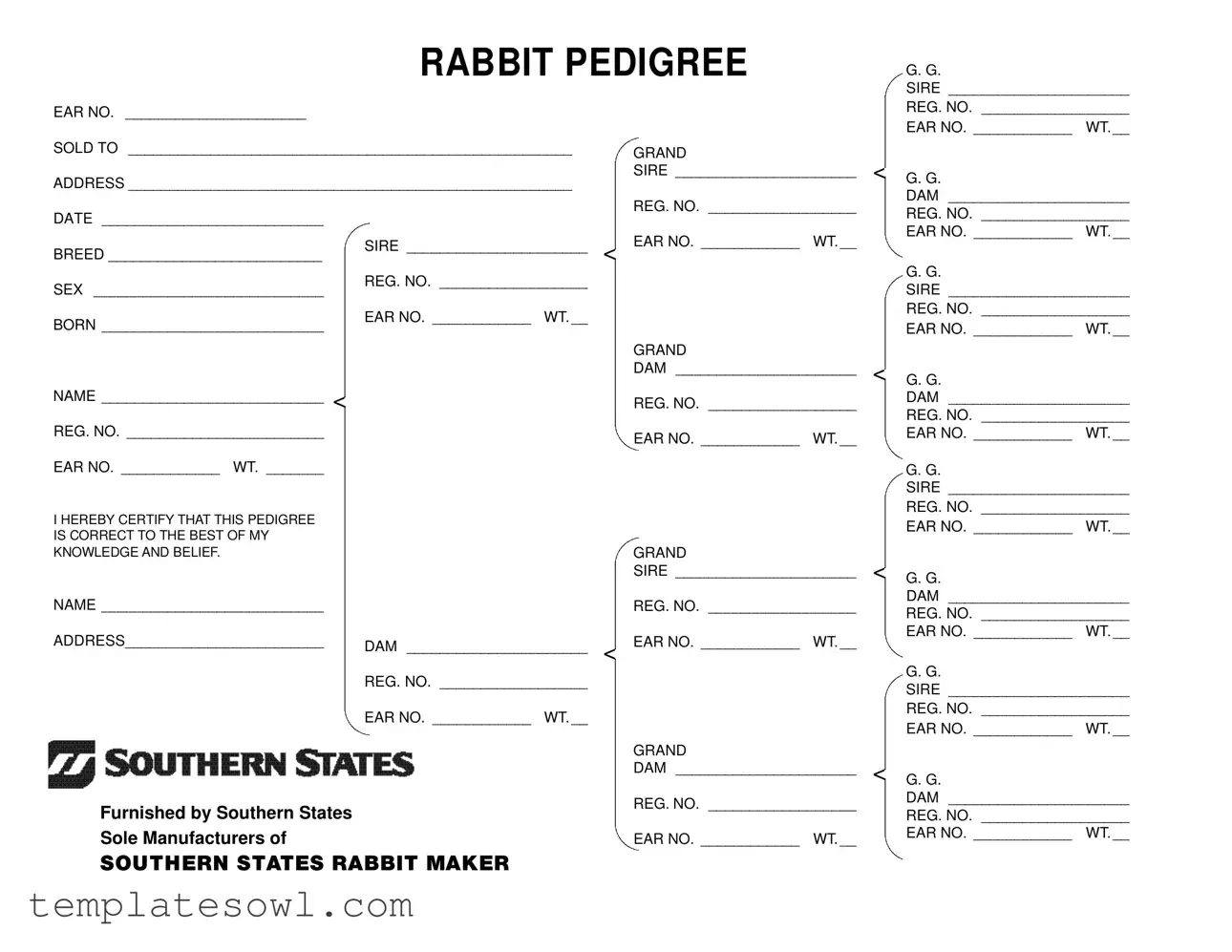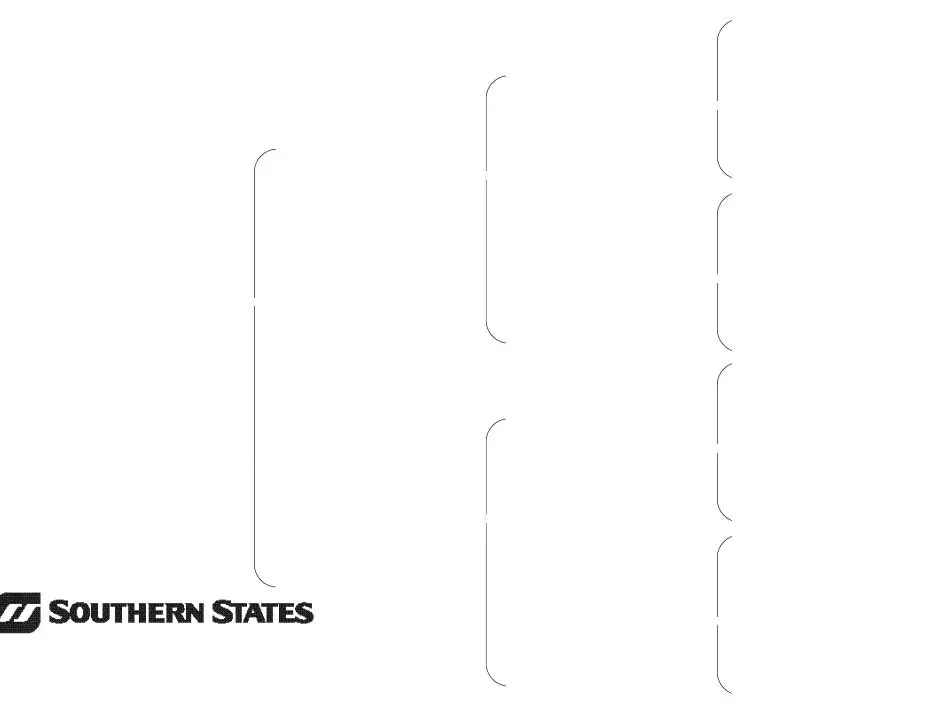What is the Rabbit Pedigree form used for?
The Rabbit Pedigree form serves as an official document that tracks the lineage and breeding history of rabbits. This form is particularly important for breeders who want to establish the pedigree for their rabbits, which can affect the rabbit's market value and breeding decisions. It helps in maintaining clear records of ancestry, which is crucial for breeding programs aimed at improving specific traits.
What information is required on the pedigree form?
The form requires several pieces of information including the names, registration numbers, and ear numbers of the rabbit's ancestors. Details such as the weight, breed, and sex of the rabbit are also necessary. Additionally, the seller's and buyer's information must be included for verifiable transactions. All this information assists in creating a comprehensive overview of the rabbit’s ancestry.
How do I complete the Rabbit Pedigree form?
To complete the Rabbit Pedigree form, first enter the rabbit's name and ear number at the top of the document. Next, fill out the details for each ancestor, including their names, registration numbers, and additional identifiers like ear numbers and weights. Make sure every section is filled out accurately to avoid any issues later. Once everything is filled out, sign to certify that the information is correct to the best of your knowledge.
Is the registration number necessary?
Yes, including the registration number is essential. This number provides proof of the rabbit’s registration with an official body, helping to legitimize the pedigree. Without the registration number, the pedigree may be considered incomplete, which could affect its acceptance in breeding circles.
Can I lose the value of my rabbit if the pedigree is not completed?
Yes, incomplete or missing pedigree forms can diminish the value of a rabbit. For breeders, a well-documented pedigree can significantly enhance the rabbit's market desirability, especially for show rabbits or those intended for breeding programs. Buyers often seek documented lineage to ensure quality and desired traits.
What should I do if I make a mistake on the form?
If you discover a mistake after completing the form, it’s best to cross out the error neatly and rewrite the correct information. Ensure that any changes are initialed and dated, as this helps maintain the integrity of the document. Avoid using correction fluid, as it could raise questions about the accuracy of the pedigree.
Is there a fee for using the Rabbit Pedigree form?
Typically, there is no direct fee for using the Rabbit Pedigree form itself, since it is often provided by breeding organizations or clubs. However, there may be associated costs if you need to register your rabbit through an official registry or if you require additional services. Check with your local rabbit breeding club for specific details.
Who furnishes the Rabbit Pedigree form?
The Rabbit Pedigree form can be furnished by recognized breeding organizations or clubs, such as Southern States, which is noted as the sole manufacturer on the form. These organizations ensure that the pedigree forms comply with relevant guidelines and help promote genetic transparency in rabbit breeding.
How can I verify the information provided on the pedigree?
To verify the information on the pedigree, you can contact the organizations responsible for maintaining breeding records. Many registries have online databases where you can look up registration numbers and confirm details about registered rabbits and their lineage. This verification process adds credibility to the pedigree information you receive and can help buyers feel more confident in their purchases.

